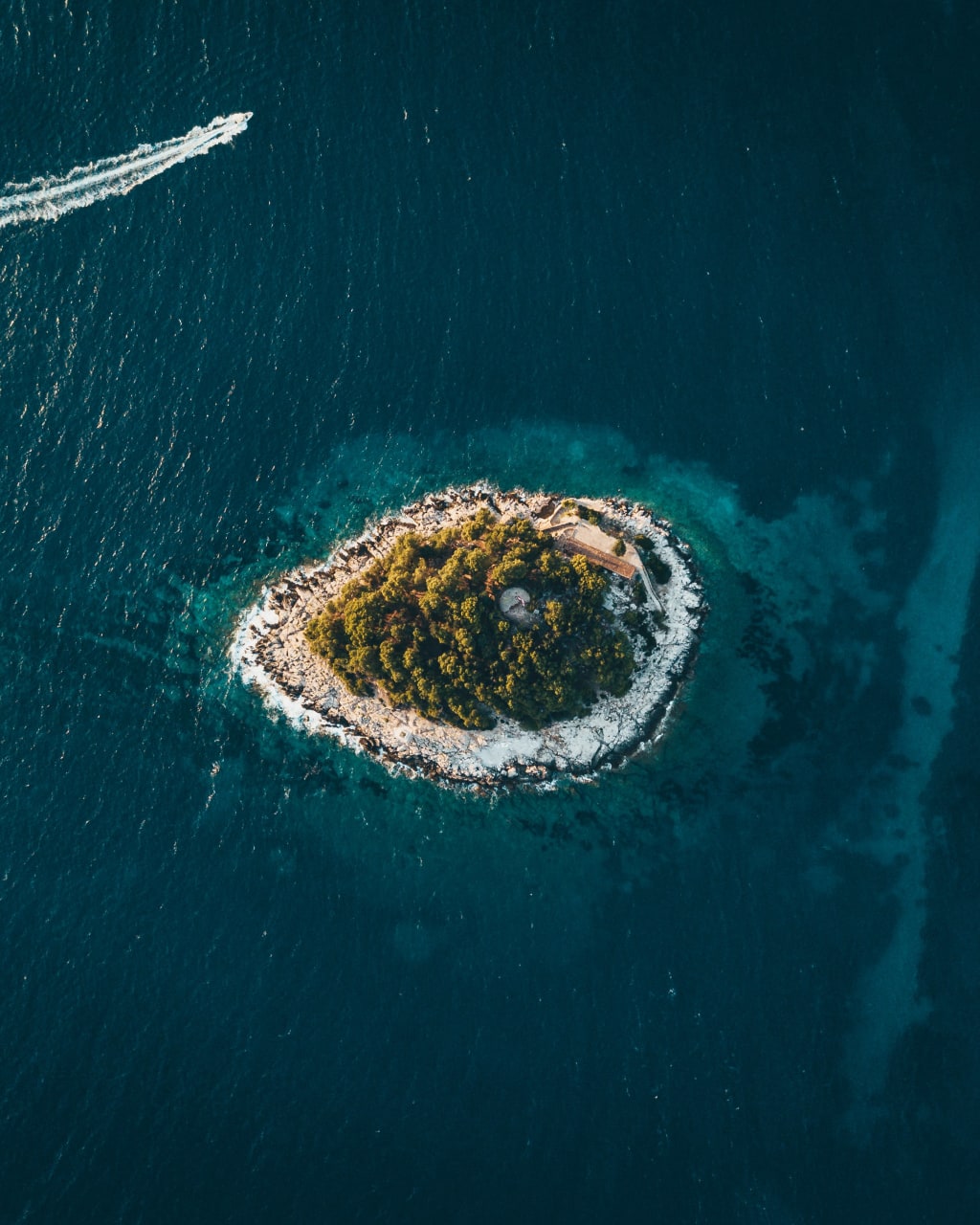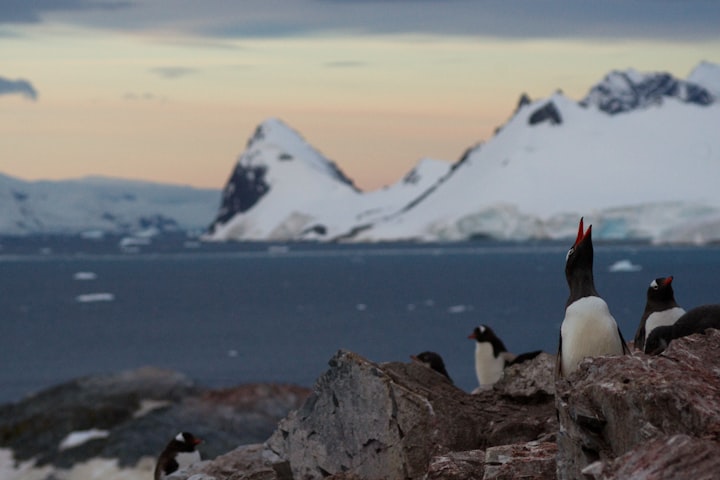
There are six major kinds of islands: continental (1), tidal (2), barrier (3), oceanic (4), coral (5), and artificial (6).
Continental islands (1) were once connected to a continent. They still sit on the continental shelf. Some formed as Earth’s shifting continents broke apart.
Scientists say that millions of years ago, there was only one large continent. This supercontinent was called Pangaea. Eventually, slow movements of the Earth’s crust broke apart Pangaea into several pieces that began to drift apart. When the breakup occurred, some large chunks of land split. These fragments of land became islands. Greenland and Madagascar are these type of continental islands.
Other continental islands formed because of changes in sea level. At the peak of the most recent glacial period, about 18,000 years ago, ice covered large parts of the Earth. Water was locked in glaciers, and the sea level was much lower than it is today. As glaciers began to melt, the sea level rose. The ocean flooded many low-lying areas, creating islands such as the British Isles, which were once part of mainland Europe.
Some large continental islands are broken off the main continental shelf, but still associated with the continent. These are called microcontinents or continental crustal fragments. Zealandia is a microcontinent off Australia that is almost completely underwater—except for the island nation of New Zealand.
Continental islands may form through the weathering and erosion of a link of land that once connected an island to the mainland. Tidal islands (2) are a type of continental island where land connecting the island to the mainland has not completely eroded, but is underwater at high tide. The famous island of Mont Saint-Michel, France is an example of a tidal island.
Barrier islands (3) are narrow and lie parallel to coastlines. Some are a part of the continental shelf (continental islands) and made of sediment—sand, silt, and gravel. Barrier islands can also be coral islands, made from billions of tiny coral exoskeletons. Barrier islands are separated from shore by a lagoon or a sound. They are called barrier islands because they act as barriers between the ocean and the mainland. They protect the coast from being directly battered by storm waves and winds.
Some barrier islands form when ocean currents pile up sand on sandbars parallel to coastlines. Eventually the sandbars rise above the water as islands. Aits, or islands in rivers, form in this way. The same currents that formed these barrier islands can also destroy or erode them.
Other barrier islands formed during the most recent ice age. As glaciers melted, the sea level rose around coastal sand dunes, creating low-lying, sandy islands. The Outer Banks, along the southeastern coast of the United States, are this type of barrier island.
Still other barrier islands were formed of materials deposited by Ice Age glaciers. When glaciers melted, they left piles of the rock, soil, and gravel they had carved out of the landscape. These piles of debris are called moraines. As flooding occurred along coasts after the glaciers melted, these moraines were surrounded by water. Long Island, New York, and Nantucket, Massachusetts, are both barrier islands formed by glacial moraines.
Oceanic islands (4), also known as volcanic islands, are formed by eruptions of volcanoes on the ocean floor. No matter what their height, oceanic islands are also known as “high islands.” Continental and coral islands, which may be hundreds of meters taller than high islands, are called “low islands.”
As volcanoes erupt, they build up layers of lava that may eventually break the water’s surface. When the tops of the volcanoes appear above the water, an island is formed. While the volcano is still beneath the ocean surface, it is called a seamount.
Oceanic islands can form from different types of volcanoes. One type forms in subduction zones, where one tectonic plate is shifting under another. The island nation of Japan sits at the site of four tectonic plates. Two of these plates, the Eurasian plate to the west and the North American plate to the north, are associated with continental shelves. The other two, the Philippine plate and the Pacific plate, are oceanic. The heavy oceanic plates (the Pacific and the Philippine) are subducting beneath the lighter Eurasian and North American plates. Japan’s islands are some of the most actively volcanic in the world.
Another type of volcano that can create an oceanic island forms when tectonic plates rift, or split apart from one another. In 1963, the island of Surtsey was born when a volcanic eruption spewed hot lava in the Atlantic Ocean near Iceland. The volcano was the result of the Eurasian tectonic plate splitting away from the North American plate. This tiny island is one of the world’s newest natural islands.
Another type of oceanic island forms as a continent shifts over a “hot spot.” A hot spot is a break in the Earth’s crust where material from the mantle bubbles or rushes up. The crust shifts, but the hot spot beneath stays relatively stable. Over millions of years, a single hot spot formed the islands of the U.S. state of Hawaii. Hawaii’s “Big Island” is still being formed by Mauna Loa and Kilauea, two volcanoes currently sitting over the hot spot. The newest Hawaiian island, Loihi, also sits over the hot spot, but is still a seamount about 914 meters (3,000 feet) beneath the Pacific.
Coral islands (5) are low islands formed in warm waters by tiny sea animals called corals. Corals build up hard external skeletons of calcium carbonate. This material, also known as limestone, is similar to the shells of sea creatures like clams and mussels.
Colonies of corals may form huge reefs. Some coral reefs may grow up in thick layers from the seafloor, until they break the water’s surface, creating coral islands. Other organic and inorganic material, like rock and sand, helps create coral islands. The islands of the Bahamas, in the Atlantic Ocean and Caribbean Sea, are coral islands.
Another kind of coral island is the atoll. An atoll is a coral reef that begins by growing in a ring around the sides of an oceanic island. As the volcano slowly sinks into the sea, the reef continues to grow. Atolls are found chiefly in the Pacific and Indian Oceans.
Artificial islands (6) are made by people. Artificial islands are created in different ways for different purposes.
Artificial islands can expand part of an already-existing island by draining the water around it. This creates more arable land for development or agriculture. The Nahua people of 14th-century Mexico created their capital, Tenochtitlan, from an artificial island in Lake Texcoco. They expanded an island in the swampy lake and connected it to the mainland through roads. Aqueducts supplied the city’s 200,000 residents with freshwater. Mexico City sits on the remains of Tenochtitlan.
Artificial islands can also be created from material brought in from elsewhere. In Dubai, companies dig (dredge) sand from the Persian Gulf and spray it near shore. Dubai’s huge artificial islands are shaped like palm trees and a map of the world. A new island complex, the Dubai Waterfront, will be the largest man-made development in the world.
Many island chains are combinations of different kinds of islands. The island nation of Seychelles is made of both continental granite islands and coral islands.
About the Creator
Akash
Every additional piece of content you learn contributes to broadening your perspective and increase your expertise. The more you read, the more you learn, and the more equipped you become to navigate the complexities of the world around you
Enjoyed the story? Support the Creator.
Subscribe for free to receive all their stories in your feed. You could also pledge your support or give them a one-off tip, letting them know you appreciate their work.






Comments
There are no comments for this story
Be the first to respond and start the conversation.